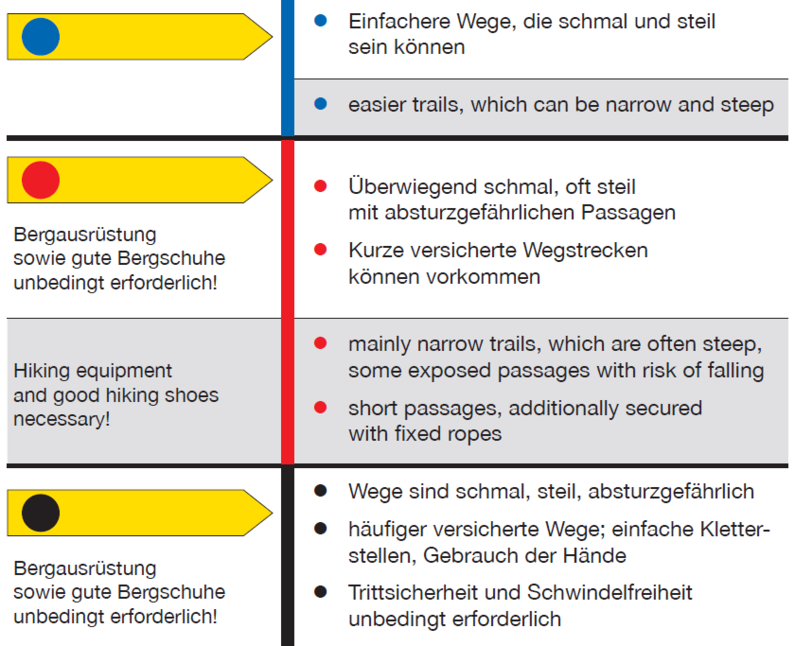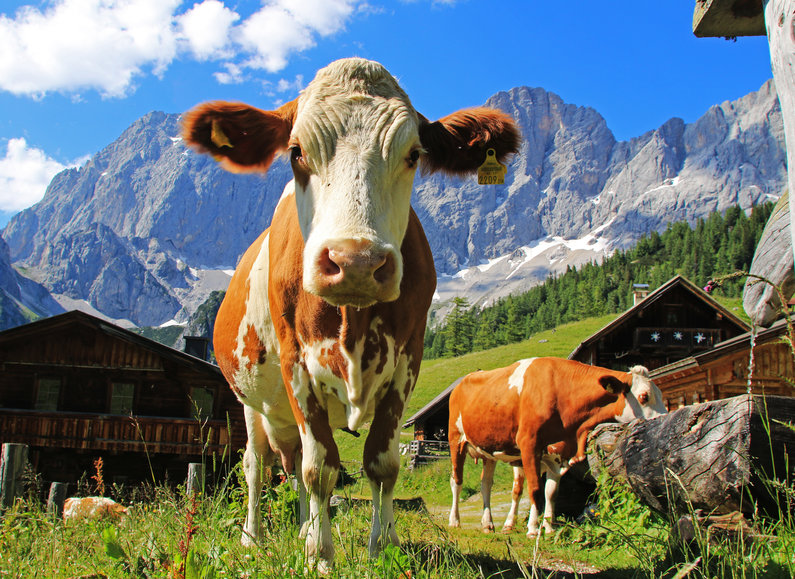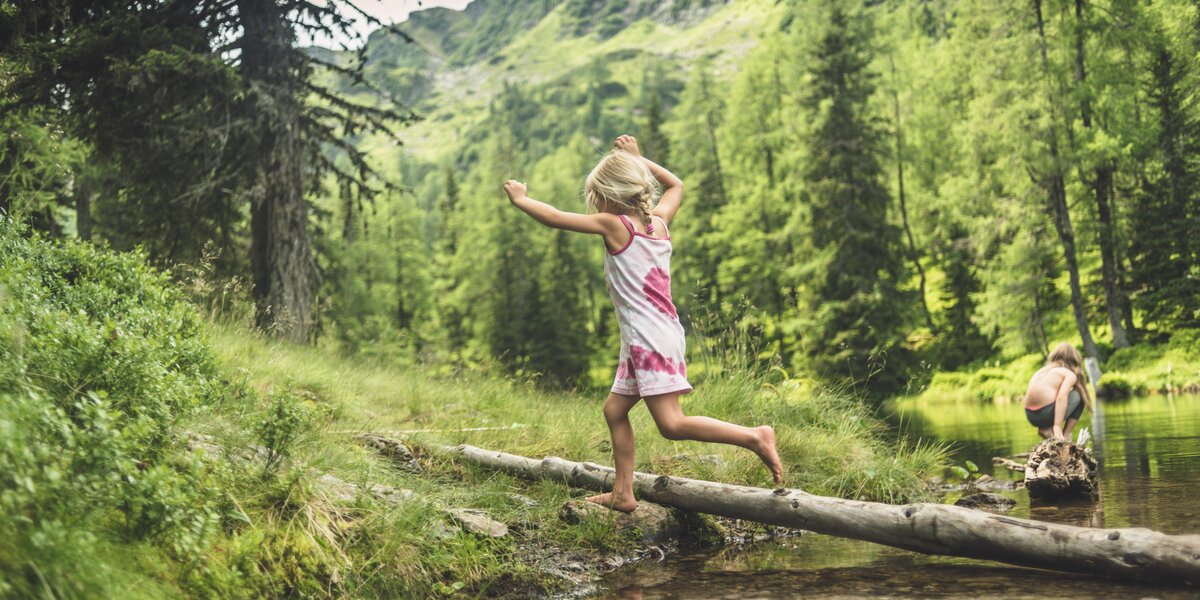Hiking in the region Schladming-Dachstein
Pristine countryside, gentle green Alpine valleys, fresh air, the magnificent limestone walls of the glaciated Dachstein, countless peaks and the 300 mountain tarns of the Schladminger Tauern - in this Styrian natural jewel, everyone discovers a place destined to become their personal favorite.
If you wish to find secret spots, why not simply join one of the many guided hikes offered in the region. Hiking in Schladming-Dachstein in Austria is an absolute delight.
Explanation of the difficulty levels of the hikes according to the Austrian Alpine Club.
If you want to go high, please find out in advance about the level of difficulty of the hike and think carefully about whether the tour is suitable for you.
The most difficult point to the specified destination is decisive for classifying the difficulty of a route.
Good path and weather conditions are taken as a basis when assessing the paths.
Cows grazing alpine pastures
How to behave correctly.
By nature, grazing cattle are curious, though not aggressive. So as to avoid conflict in alpine grazing areas, it is wise to follow a few simple recommendations – especially if you are out hiking with a dog. Here are a few tips for man and dog, since it is the responsibility of hikers and mountain bikers to keep an eye open for potential problems and to be respectful when crossing the high meadows. Always obey and pay close attention to signs as posted!
Tips for hikers
Shoes: for ALL hiking and mountain tours always use proper footwear, ideally ankle-high mountain boots.
Clothing: High-quality hiking clothing not only protects you from wind and weather, but also from harmful UV rays. And a decent all-weather jacket can be extremely useful in a short rain shower.
Sun protection: Sunglasses and sun cream (at least factor 30) are indispensable not only on the beach, but also in the mountains! Don't forget to put sunscreen on your ears and neck and, if you wear shorts, on your calves!
Drink enough: a hot summer day, physical activity and the associated heavy loss of fluids through sweating - therefore always take enough drinks (NO alcohol during the tour) with you when hiking and mountaineering.
Orientation: numerous well-marked hiking trails lead through the mountains of Schladming-Dachstein. Please always stay on the marked and signposted paths and trails and take a suitable hiking map (scale 1:25,000 or at least 1:50,00) with you. With the Schladming-Dachstein App (free to download from the Google Play Store or the IOS App Store) there is also an ideal orientation aid for smartphones.
Fitness: Plan tours in such a way that, in terms of length, walking time and difference in altitude, the hiking day is not a torture but a pleasure! As a golden rule: approx. 300 metres of difference in altitude per hour of walking time in the ascent or around 4 kilometres per hour of walking time for the length of the route. The approximate walking times (WITHOUT breaks) are written on many yellow information boards.
Tour planning: choose tours in such a way that ALL participants can easily cope with the difficulties and the length of the tour. Inform in advance whether e.g. surefootedness etc. is necessary! Always leave information about the planned tour destination and the time of return with relatives or in the accommodation!
If worst comes to worst: a small pharmacy with blister plaster, triangular cloth, emergency blanket and bandages belongs in every rucksack! Mountain rescue emergency call 140 or 112, don't forget your mobile phone, international dialling code for Austria +43.
Trust in professionals: for special and safe mountain experiences, state-certified and certified mountain and ski guides offer guided tours of all levels of difficulty and training courses for via ferrata ascents, climbing tours and high altitude tours.
Grazing cattle: On alpine pastures, please generally keep calm, do not frighten grazing animals and do not seek contact with grazing livestock or even try to feed the animals.
Dogs: Dogs attract the special attention of grazing animals as they are perceived as a potential threat. Therefore, always keep your dog on a short leash and take it into the middle of the group if possible. Never tie the leash around your body; it must be possible to let go of the leash or the dog at any time. Prevent your dog from getting too close to the herd or even starting to chase.




















